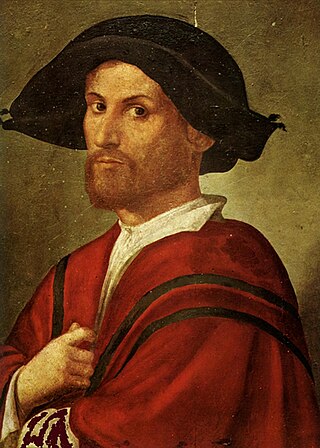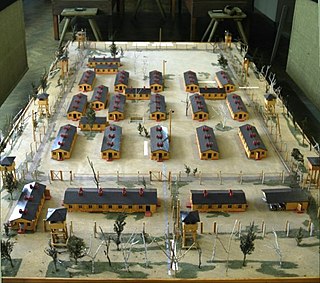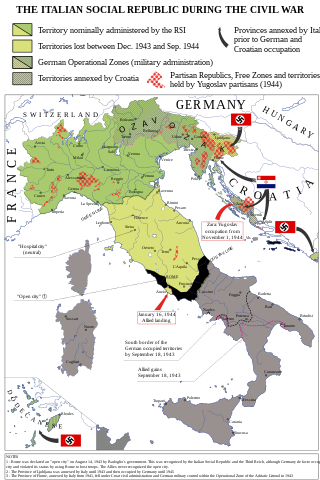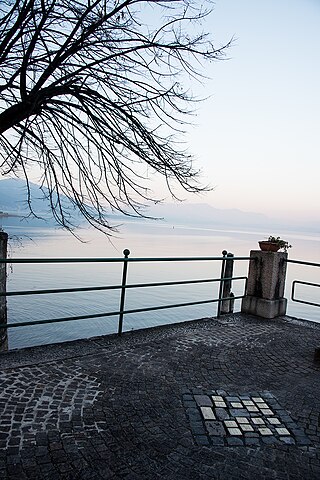Related Research Articles
Contract killing is a form of murder or assassination in which one party hires another party to kill a targeted person or people. It involves an illegal agreement which includes some form of payment, monetary or otherwise. Either party may be a person, group, or organization. Contract killing has been associated with organized crime, government conspiracies, dictatorships, and vendettas. For example, in the United States, the Italian- and Jewish-American organized crime gang Murder, Inc. committed hundreds of murders on behalf of the National Crime Syndicate during the 1930s and '40s.

Karl Eberhard Schöngarth was a German SS officer during the Nazi era. He was a war criminal who perpetrated mass murder and genocide in German-occupied Poland during the Holocaust; he participated in the January 1942 Wannsee Conference, at which the genocidal Final Solution to the Jewish Question was originally planned After the war, Schöngarth and six others were tried for murdering a single downed Allied pilot, Americo S. Galle, in 1944. They were all found guilty. Five of them, including Schöngarth, were sentenced to death. They were all executed in 1946.
The Boston Strangler is the name given to the murderer of 13 women in Greater Boston during the early 1960s. The crimes were attributed to Albert DeSalvo based on his confession, details revealed in court during a separate case, and DNA evidence linking him to the final victim.

Giovanni Borgia, 2nd Duke of Gandía (1476–1497) was the second born and the second son of Pope Alexander VI and Vannozza Cattanei and a member of the House of Borgia. He was the brother of Cesare, Gioffre, and Lucrezia Borgia. He was murdered on 14 June 1497. Even today, it is not known with certainty who was responsible for his death, although many at the time blamed his brother Cesare.

Eugenio Calò was an Italian Jewish resistance fighter during World War II. Born in Pisa to an old Sephardi family, he was posthumously awarded the Gold Medal for Military Valour, Italy's highest honor for heroism. Eugenio Calò was an Italian partisan, second in command of the Pio Borri partisan division that fought the Germans in the Casentino mountains in Tuscany. As a Jewish victim of fascist Italy during the Second World War, Calò had lost his workshop, his home, and his family. Finally, at the age of 38, he was captured, tortured and murdered by the Germans.

The Ardenne Abbey massacre occurred during the Battle of Normandy at the Ardenne Abbey, a Premonstratensian monastery in Saint-Germain-la-Blanche-Herbe, near Caen, France. In June 1944, 20 Canadian soldiers were massacred in a garden at the abbey by members of the 12th SS Panzer Division Hitlerjugend over the course of several days and weeks. This was part of the Normandy Massacres, a series of scattered killings during which up to 156 Canadian prisoners of war were murdered by soldiers of the 12th SS Panzer Division during the Battle of Normandy. The perpetrators of the massacre, members of the 12th SS Panzer Division, were known for their fanaticism, the majority having been drawn from the Hitlerjugend or Hitler Youth.

The Citizens' Commission to Investigate the FBI was an activist group operational in the US during the early 1970s. Their only known action was breaking into a two-man Media, Pennsylvania, office of the Federal Bureau of Investigation (FBI) and stealing over 1,000 classified documents. They then mailed these documents anonymously to several US newspapers to expose numerous illegal FBI operations which were infringing on the First Amendment rights of American civilians. Most news outlets initially refused to publish the information, saying it related to ongoing operations and that disclosure might have threatened the lives of agents or informants. However, The Washington Post, after affirming the veracity of the files which the Commission sent them, ran a front-page story on March 24, 1971, at which point other media organizations followed suit.
Free Cinema was a documentary film movement that emerged in the United Kingdom in the mid-1950s. The term referred to an absence of propagandised intent or deliberate box office appeal. Co-founded by Lindsay Anderson with Karel Reisz, Tony Richardson and Lorenza Mazzetti, the movement began with a programme of three short films at the National Film Theatre, London on 5 February 1956. The programme was such a success that five more programmes appeared under the ‘Free Cinema’ banner before the founders decided to end the series. The last event was held in March 1959. Three of the screenings consisted of work from overseas filmmakers.

The Hinterkaifeck murders occurred on the evening of 31 March 1922, when six inhabitants of a small Bavarian farmstead, located approximately 70 kilometres (43 mi) north of Munich, Germany, were murdered by an unknown assailant. The six victims were Andreas Gruber and Cäzilia Gruber ; their widowed daughter Viktoria Gabriel ; Viktoria's children, Cäzilia and Josef ; and the maid, Maria Baumgartner. They were all found struck dead with a mattock also known as grub axe. The perpetrator lived with the six corpses of their victims for three days. The murders are considered one of the most gruesome and puzzling unsolved crimes in German history.

The Huta Pieniacka massacre was a massacre of the Polish inhabitants of the village Huta Pieniacka, located in modern-day Ukraine, which took place on February 28, 1944. Estimates of the number of victims range from 500, to 1,200.

The massacres in Piaśnica were a set of mass executions carried out by Nazi Germany during World War II, between the fall of 1939 and spring of 1940 in Piaśnica Wielka in the Darzlubska Wilderness near Wejherowo. The exact number of people murdered is unknown, but estimates range between 12,000 and 14,000 victims. Most of them were Polish intellectuals from Gdańsk Pomerania, but Poles, Jews, Czechs and German inmates from mental hospitals from the General Government and the Third Reich were also murdered. After the Stutthof concentration camp, Piaśnica was the largest site of killings of Polish civilians in Pomerania by the Germans, and for this reason, is sometimes referred to as the "second" or "Pomeranian" Katyn. It was the first large-scale Nazi atrocity in occupied Poland.

As Allied troops entered and occupied German territory during the later stages of World War II, mass rapes of women took place both in connection with combat operations and during the subsequent occupation of Germany. Scholars agree that the vast majority of the rapes were committed by Soviet occupation troops. The wartime rapes were followed by decades of silence.

The Stalag Luft III murders were war crimes perpetrated by members of the Gestapo following the "Great Escape" of Allied prisoners of war from the German Air Force prison camp known as Stalag Luft III on March 25, 1944. Of the 76 successful escapees, 73 were recaptured, most within several days of the breakout, 50 of whom were executed on the personal orders of Adolf Hitler. These summary executions were conducted within a short period following recapture.

Amon Leopold Göth was an Austrian SS functionary and war criminal. He served as the commandant of the Kraków-Płaszów concentration camp in Płaszów in German-occupied Poland for most of the camp's existence during World War II.
Heidi Hazell was a German citizen murdered by the Provisional Irish Republican Army (IRA.) The investigation into her murder was reopened in March 2015. The victim's family and the German Federal Attorney have argued that the Good Friday Agreement, which imposes limitations on retrospective criminal proceedings being filed against paramilitaries who committed crimes during The Troubles, may not be binding. This argument is made on the basis that the Geneva Convention would supersede the Good Friday Agreement in a situation where a civilian non-combatant like Hazell was killed by a paramilitary, thereby demanding prosecution as a war crime. The murder of Hazell, a German citizen, also took place in Germany and the country is not legally bound by the agreement between the United Kingdom and Ireland.

Lorenza Mazzetti was an Italian film director, novelist, photographer and painter.

The Padule di Fucecchio massacre was the murder of at least 174 Italian civilians, carried out by the 26th Panzer Division at Padule di Fucecchio, a large wetland north of Fucecchio, Tuscany, on 23 August 1944. After the war, the commander of the 26th Panzer Division was sentenced for war crimes, but the men who carried out the massacre were not convicted until 2011 and none served any jail time. The massacre has been described as "one of the worst Nazi atrocities in Italy".

Two of the three Axis powers of World War II—Nazi Germany and their Fascist Italian allies—committed war crimes in the Kingdom of Italy.

The Lake Maggiore massacres was a set of World War II war crimes that took place near Lake Maggiore, Italy, in September and October 1943. Despite strict orders not to commit any violence against civilians in the aftermath of the Italian surrender on 8 September 1943, members of the 1st SS Panzer Division Leibstandarte SS Adolf Hitler murdered 56, predominantly Italian and Greek, Jews. Many of the bodies were sunk into the lake to prevent discovery but one washed ashore in neighbouring Switzerland, drawing international attention to the massacre and prompting an inconclusive divisional inquiry. It is commonly referred to as the first German massacre of Jews in Italy during World War II.

The Normandy massacres were a series of killings in-which approximately 156 Canadian and two British prisoners of war (POWs) were murdered by soldiers of the 12th SS Panzer Division during the Battle of Normandy in World War II. The majority of the murders occurred within the first ten days of the Allied invasion of France. The killings ranged in scale from spontaneous murders of individual POWs, to premeditated mass executions. Colonel Kurt Meyer, a commander in the 12th SS Panzer Division, was the only perpetrator charged for his role in the atrocities.
References
- ↑ Shachnai, Omer (21 February 2011). "Better Late Than Never: Who Killed Einstein's Family?". ShalomLife. Archived from the original on 24 February 2011. Retrieved 25 August 2018.
- 1 2 3 4 5 6 7 8 9 Kellerhoff, Sven Felix (21 February 2011). "Die ewige Suche nach dem Mörder der Einsteins" [The eternal search for the Einstein murderers]. Die Welt (in German). Retrieved 3 July 2018.
- ↑ Einstein, Albert (1987). "The Collected Papers of Albert Einstein: The early years, 1879-1902". Princeton University Press. p. xvi. ISBN 9780691084756.
- 1 2 3 4 5 6 7 8 Dosch, Stefan (23 August 2017). "Einsteins Nichten: Die tragische Geschichte von zwei Schwestern" [Einstein's nieces: The tragic story of two sisters]. Augsburger Allgemeine (in German). Retrieved 3 July 2018.
- 1 2 "Police hunt Einstein family murder witness". The Local . 19 November 2011. Retrieved 3 July 2018.
- ↑ @hardboiledgregs, Greg DiPietro. "The Leonard Group, Inc". The Leonard Group, Inc. Retrieved 2018-08-26.